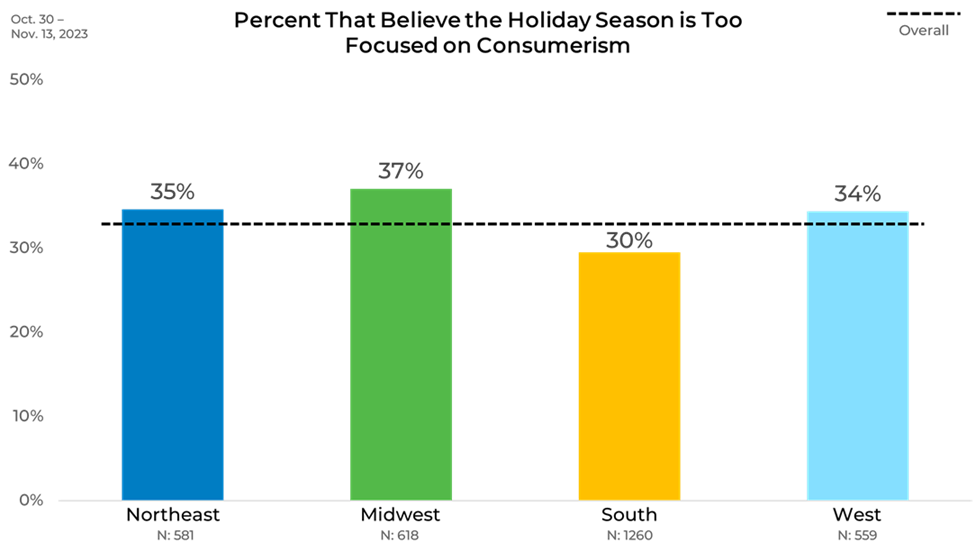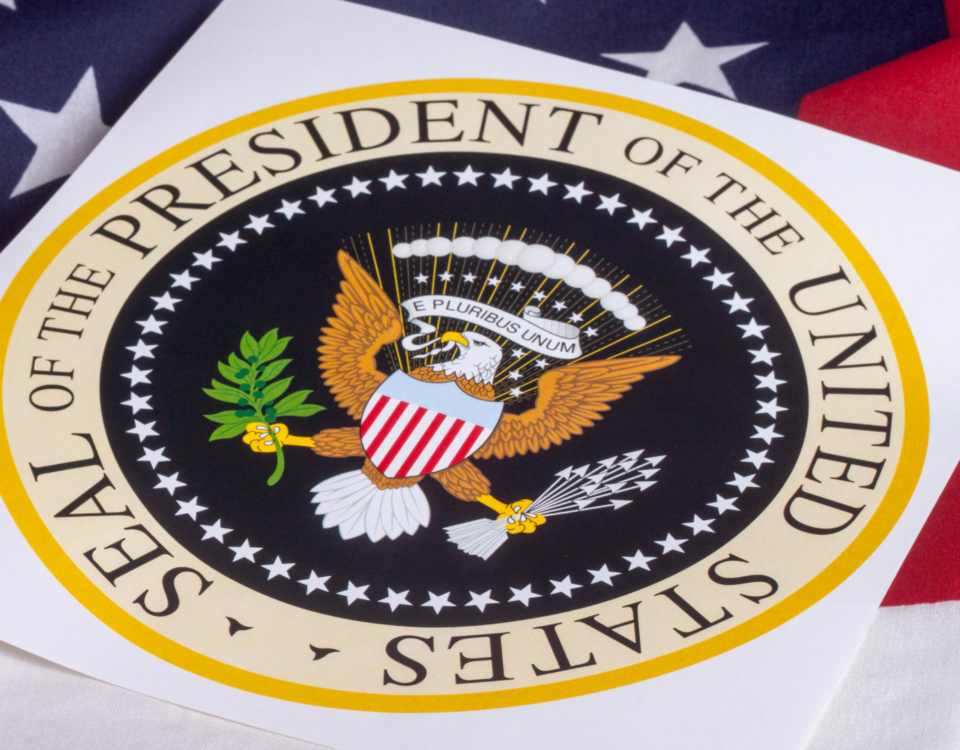
Intellicast S6E30: Continuing the AI Discussion
December 13, 2023
Intellicast S6E31 – That’s a Wrap on Season 6!
December 19, 2023Amidst the warmth and festivities of the holiday season, there exists a subtle undercurrent of concern that can vary significantly depending on one’s background and perspective. While many eagerly anticipate this time of year, a closer look at recent data from our recent round of research-on-research reveals that a sizeable portion of the population harbors reservations about the season’s consumeristic leanings.
Overall, 33% of respondents feel that the holiday season has become overly commercialized. This statistic offers more than just a number—it reflects a growing sentiment that perhaps the season’s true spirit is being overshadowed by a push towards consumption and materialism.

Gender
Looking at the results by gender, we found that 35% of women feel the festive season is too wrapped up in consumerism, a sentiment that is slightly less common among men, with 31% agreeing. It’s a slight but interesting difference that adds another layer to how we all view the holiday hustle and bustle.

Age
When breaking down the results by age, we found that as age increases, so does the likelihood of viewing the season as too focused on consumerism. Notably, 50% of individuals aged 65 and older believe the season has become too materialistic, 27% more than the youngest adults surveyed. In fact, seniors are twice as likely as the youngest adult group to hold this view, illustrating a generational divide in attitudes toward holiday consumerism.

Income
Income levels also appear to influence one’s perceptions of the holiday season’s emphasis on consumerism. Those earning between $20,000 and $39,999 express the most concern, with 39% believing the season is too commercial—a stark contrast to the 23% of individuals earning under $20,000 who share this view. This indicates a 16% greater likelihood among the $20,000 to $39,999 earners to feel the holiday focus has shifted away from its more traditional roots. At the lower end of the income spectrum, there’s a notable 8% dip compared to other groups.

Political Affiliation
When looking at results by political affiliation, 36% of Republicans feel that the holiday season is excessively commercial, the highest percentage among the groups. Independents are close behind, with 35% echoing this sentiment. Democrats show a slightly lower concern at 32%.

Ethnicity
When breaking down the results by ethnicity, Caucasians report the highest concern about the holiday season’s commercial focus, with 39% resonating with this sentiment. This figure is notably higher – 19% more, in fact – than African Americans, who are the least likely, at 20%, to view the holidays as too consumer-oriented. Among the ethnic groups surveyed, Caucasians are 8% more likely than the nearest group to feel this way. Meanwhile, African Americans are 6% less likely to hold this view than others, marking a significant difference in perceptions across ethnicities regarding the commercialization of the holiday season.

Region
Regionally, the Midwest stands out, with 37% of its inhabitants perceiving a tilt towards consumerism. This sentiment is 7% more prevalent than in the South, where residents are less likely to share this view. In contrast, the Northeast and the West are closely aligned in their perspectives, both hovering around the one-third mark.

Panel
Among the various panels, a noteworthy contrast exists between Panels B and D regarding their views on the holiday season’s consumerism. Panel D exhibits a striking 25% greater likelihood than Panel B to perceive the season as excessively focused on consumerism. In simpler terms, Panel D is twice as likely to hold this view as Panel B. This substantial disparity underscores the significant influence that different panels can have on perceptions of holiday consumerism.

As you can see, attitudes and preferences can vary significantly across demographics and by panel, impacting your data. If you were to run a study around purchase intent and only used Panel B, your results would be vastly different than if you had only used Panel D. That is why strategically blending sample is the best practice for getting reliable results to make better decisions from.
Learn more about panel differences in our annual report on the sample industry, The Sample Landscape: 2023 Edition.




